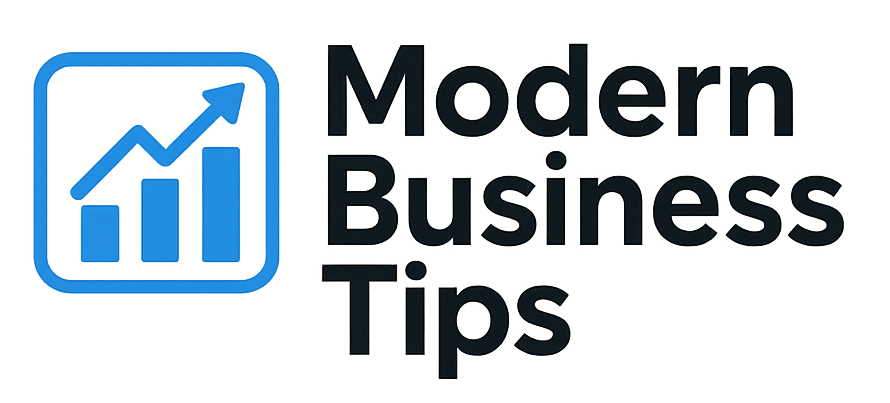Ever thought your B2B lead generation might be missing something? Today’s market is fast-changing, and old methods like cold calling and outdated emails just don’t cut it. Marketers need to think differently to get high-quality leads.
It’s time to explore new tricks like Account-Based Marketing and using technology smartly. By doing so, we can make our lead generation better, more efficient, and effective.
Key Takeaways
- The importance of evolving B2B lead generation methods to meet market demands.
- Account-Based Marketing as a key component for attracting better leads.
- Leveraging technology for improved lead generation outcomes.
- The shift from traditional strategies to innovative approaches.
- Understanding market changes can sharpen lead generation efforts.
Understanding B2B Lead Generation
B2B lead generation is about finding and attracting business clients. It’s key for companies to turn prospects into customers. Let’s dive into the detailed methods used in this process.
Definition of B2B Lead Generation
It’s about finding business clients, engaging them, and helping them buy. This includes using content marketing and email to grab attention. Good B2B lead generation helps businesses grow, no matter their size.
Importance in Today’s Market
In today’s market, a strong lead generation strategy is vital. Old ways of reaching out don’t work well anymore. Companies need to get personal and use data to connect with people.
This approach makes leads better and helps sales grow over time. It’s all about building strong relationships with customers.
Common B2B Lead Generation Strategies
In the world of B2B marketing, it’s key to have good lead generation strategies. Many proven methods can help businesses get and keep leads. Knowing how to use these strategies can build strong relationships and success.
Content Marketing
Content marketing is a key part of B2B lead generation. By making valuable content like blogs and white papers, I can solve industry problems. Good content draws in people and makes my brand look trustworthy.
Social Media Marketing
Social media marketing is also very effective. Sites like LinkedIn and Twitter let me talk directly to my audience. Regular posts and chats can make my brand more known and spark interesting talks about what I offer. This often leads to better leads.
Email Campaigns
Email campaigns are a strong tool for getting leads. By sending personalized emails, I can meet specific needs and show my value. Focusing on certain groups makes my messages hit home, boosting chances of getting a yes.
The Untold Trick: Account-Based Marketing
Account-Based Marketing (ABM) changes how we get leads. It focuses on key accounts, not a wide audience. This way, I can send messages that really talk to decision-makers, making better B2B sales leads.
What is Account-Based Marketing?
ABM is a team effort between marketing and sales to target specific accounts. It means finding important customers and making campaigns for them. This way, I build trust and relationships, which are key for growing leads.
With ABM, every tactic fits what the target accounts need and face. It’s all about making connections and building trust.
Benefits of Account-Based Marketing
ABM brings many benefits, not just better leads. Here are some:
- Enhanced ROI: Personalized efforts lead to better returns, as each campaign meets specific needs.
- Improved Alignment: ABM helps sales and marketing teams work better together, ensuring everyone is on the same page.
- Higher Closure Rates: Focusing on the right accounts means more chances to turn leads into customers, boosting growth.
- Resource Optimization: It lets me invest in leads that really count, making my lead generation more effective.
In today’s tough B2B market, ABM can make my business stand out. It leads to real connections and lasting partnerships.
The Role of Technology in B2B Lead Generation
In today’s digital world, technology plays a big role in B2B lead generation. Knowing about CRM systems and marketing automation tools helps businesses work better. It also improves how they talk to customers.
CRM Systems
CRM systems are key for managing customer relationships. They keep all contact info in one place. This makes it easy to track and understand what leads are doing.
With this info, businesses can send more personalized messages. This makes customers feel valued and helps in getting their attention. The right CRM helps me know which leads to focus on first.
Marketing Automation Tools
Marketing automation tools change how we run campaigns. They handle tasks like sending emails, saving time for more important things. These tools also give insights into how well campaigns are doing.
Using these tools means messages get to the right people at the right time. This boosts the chances of turning leads into customers.
Adding technology to my lead generation plan makes things more efficient. With CRM systems and marketing automation, I can better care for leads at every step.
| Technology | Function | Benefit |
|---|---|---|
| CRM Systems | Management of customer interactions | Improved lead tracking and personalized communication |
| Marketing Automation Tools | Automation of marketing tasks | Time-saving with enhanced engagement metrics |
Creating a Buyer Persona
Understanding your target audience is key for B2B lead generation success. A buyer persona is a detailed picture of your ideal customer. It’s made by mixing market research with insights from current customers.
What is a Buyer Persona?
A buyer persona is a realistic image of your perfect customer. It’s based on real data and research. By knowing your audience well, I can tailor my strategies to meet their needs, improving my marketing.
Elements of an Effective Buyer Persona
A good buyer persona clears up any confusion. Here are the key parts:
- Demographics: Age, gender, income, education, and job title help understand who they are.
- Behavioral Traits: Looking at how they behave and make decisions shows where to connect with them.
- Challenges: Knowing their common problems lets me offer solutions that solve their issues.
- Buying Motivations: Figuring out what drives their purchases helps craft more effective marketing.
By adding these elements to a buyer persona, I can use lead generation tools more effectively. A clear persona makes outreach easier and builds stronger relationships. This leads to better engagement and higher conversion rates.
Leveraging Data for Better Leads
In today’s world, using data analytics is key for better lead generation. Data helps shape marketing plans and understand how leads behave. This knowledge lets businesses create campaigns that really speak to their audience.
Importance of Data Analytics
Data analytics is vital for spotting trends and patterns. It helps companies find the right customers and make content that interests them. This approach boosts engagement and turns prospects into loyal customers.
Tools for Data Collection
Many tools help collect data for lead generation. CRM systems, website analytics, and social media insights offer important user data. Choosing the right tools helps track performance and use resources well. With new tech, companies can use data to improve their strategies, leading to better leads and higher conversion rates.
Networking: The Hidden Gem
Networking is often overlooked in B2B lead generation. Yet, it’s key in building valuable relationships that boost lead generation. Talking with industry peers helps build trust, which is vital for working together.
Building Relationships with Industry Peers
Building connections with peers is essential for a strong network. These relationships can lead to partnerships, referrals, and new opportunities. By sharing insights and supporting each other, these bonds grow stronger.
Attend Relevant Events and Conferences
Going to events and conferences is a great way to meet clients directly. These places are perfect for real talks. Face-to-face meetings improve your brand’s image and help make new connections.
Content That Converts: The Right Type
In the competitive world of B2B lead generation, creating content that converts is key. Case studies and white papers are among the most effective. They show value and authority.
Case Studies
Case studies are powerful tools for showing success stories. They give real examples of how a product or service helped a client. This shows the impact my offerings have had on businesses.
They build credibility and resonate with prospects who face similar challenges. Including specific metrics and outcomes makes them even more persuasive.
White Papers
White papers offer in-depth analysis on industry-specific issues. They help establish thought leadership and address client pain points. An effective white paper goes beyond facts and figures.
It offers solutions and educates readers on important topics. This builds trust and positions my brand as knowledgeable. It drives engagement and conversions.
Nurturing Leads through Follow-Up
Nurturing leads is key to turning prospects into loyal customers. Timely follow-ups show professionalism and real interest. A fast response can boost the chance of more engagement, keeping me connected to possible clients.
Different follow-up plans are needed for various lead types. This depends on where they are in the buying process.
Importance of Timely Follow-Ups
Following up quickly is vital for nurturing leads. Waiting too long can lead to lost interest and missed chances. Quick responses show urgency and care, which many clients value.
The role of timely follow-ups in keeping leads engaged and converting them is huge. Regular communication shows my dedication and builds trust. It also helps create lasting relationships.
Different Follow-Up Strategies
Using different follow-up strategies helps me meet the needs of each lead. Here are some effective methods:
- Personalized Emails: Customizing messages to match leads’ specific needs or interests boosts engagement.
- Phone Calls: Direct talks help build rapport and clear up any doubts leads might have.
- Scheduled Reminders: Setting reminders for follow-ups keeps me active in my outreach efforts.
Combining effective lead generation with nurturing through timely follow-ups increases the chance of converting leads into happy customers. By always providing useful information and insights, I keep their interest and help them through the decision-making process.
Leveraging Webinars for Lead Generation
Webinars are a great way for businesses to connect with people who might become customers. They show off what they know and help others learn. This makes businesses seem trustworthy and knowledgeable, which helps get more leads.
Benefits of Hosting Webinars
Hosting webinars lets businesses reach more people, no matter where they are. It’s a chance to talk to people in real time. This makes businesses more visible and helps build relationships with future customers.
Topics that Attract Attention
Choosing the right topics is key to getting people to watch webinars. Talking about current trends and problems can grab attention. By solving these issues, businesses can really draw in viewers and turn them into leads.
Measuring Your B2B Lead Generation Success
Understanding how to measure success in B2B lead generation is key. By focusing on key metrics, I can see how well my campaigns do. This helps me make strategies that meet my audience’s needs.
Key Metrics to Track
I track conversion rates, customer acquisition costs, and return on marketing investment. These metrics show me what leads are successful. For instance, conversion rates show how many leads become customers. Customer acquisition costs help me see if my strategies are financially smart.
By watching these closely, I can make choices that boost my profits.
Adjusting Strategies Based on Data
Adjusting strategies based on data is essential for success. I regularly check my key metrics to see what works and what doesn’t. If a campaign isn’t doing well, I might change the content or target different people.
This flexibility keeps me ahead, leading to better leads and more sales.



